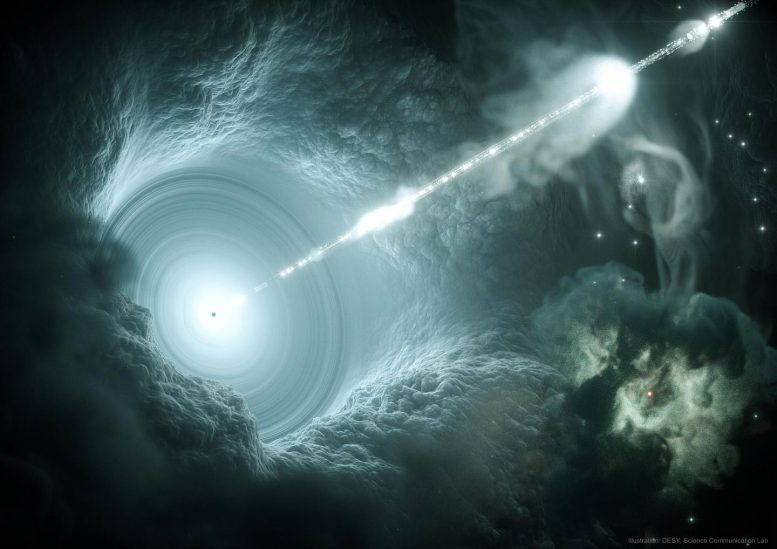
This is an artist’s drawing of a particle jet emanating from a black hole at the center of a blazar. Credit: DESY, Science Communication Lab (used with permission by Astronomy Picture of the Day, which is co-managed by Robert Nemiroff at Michigan Tech).
Astrophysicists Jon Hakkila of the College of Charleston and Robert Nemiroff of the Michigan Technological University have published research indicating that blasts that create gamma-ray bursts may actually exceed the speed of light in surrounding gas clouds, but do so without violating Einstein’s theory of relativity.
Hakkila and Nemiroff propose that such superluminal jets could create the time-reversibility seen in gamma-ray burst light curves. These proposed jets, however, do not violate Einstein’s theory of relativity because they only move faster than light does through the jet medium, not faster than light through a vacuum.
“Standard gamma-ray burst models have neglected time-reversible light curve properties. Superluminal jet motion accounts for these properties while retaining a great many standard model features.” — Jon Hakkila
Hakkila says that a good way to visualize this superluminal motion is to imagine someone on one side of a pond skipping a stone across the water in your direction. The frequently-hopping stone moves through the air between hops faster than the waves it generates move through the water. Hakkila says you would see waves created by each skip of the approaching stone in reverse order, with waves from the most recent skip arriving first and those from the initial skip arriving last.
This superluminal blast explanation retains many characteristics of accepted gamma-ray burst jet models, Hakkila says. Nemiroff adds, however, that their proposed scenario involves Cherenkov radiation, a type of light created by superluminal motion that was not previously thought to be important in generating the light curves of gamma-ray bursts.
“Standard gamma-ray burst models have neglected time-reversible light curve properties,” Hakkila says. “Superluminal jet motion accounts for these properties while retaining a great many standard model features.”
This work appears in a recent issue of The Astrophysical Journal.
Reference: “Time-reversed Gamma-Ray Burst Light-curve Characteristics as Transitions between Subluminal and Superluminal Motion” by Jon Hakkila and Robert Nemiroff, 23 September 2019, The Astrophysical Journal.
DOI: 10.3847/1538-4357/ab3bdf

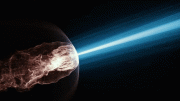
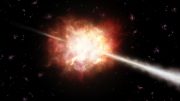
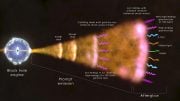
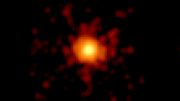
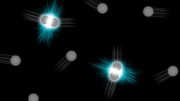
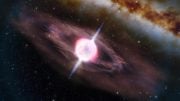
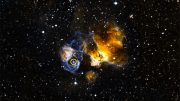
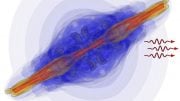
Cherenkov radiation. I knew it when i read the headline! When particles exceed The phase velocity of the medium they’re moving through electromagnetic radiation is emitted from the back instead of the front as it is normally. Cherenkov reduction is blue for this reason.
TYPO Chrenkov radiation, not reduction
Since your big mouth about your discovery gets China’s attention, China will use it to destroy USA.
I don’t believe these things are possible for us to control. So don’t worry about China destroying the USA as they can’t control Gamma Burst Rays.
I thought gamma Ray’s only occurred when there’s a pulsar?
Please explain.
So the black holes absorb light but emit the gamma-ray bursts, and this is all because of time reversal. WOW, what else will science come up with.
Experiment proves information can propagate instantaneously across space
————————————————————————————
We present an experiment that proves conclusively that information can be propagated nearly instantaneously across space, in the nearfield of an electromagnetic pulse. The experiment consists of a ~30kV high voltage spark generator creating an electromagnetic pulse that propagated 1.5m to a detector. The leading edge of the transmitted pulse and the leading edge of the detected pulse were then compared using an oscilloscope and no time delay within the capability of the scope was observed, where 5ns is predicted if it had propagated at the light speed. The maximum uncertainty in the measurement was 1ns due to noise in the electronics. Since a pulse is digital information. This experiment proves information can be transmitted across space nearly instantaneously. The results is perfectly predicted by Maxwell equations, which yield a wave equation set equal to a source term. Analysis of this equation shows that the phase speed, group speed, and information speed are instantaneous in the nearfield and reduce to the speed of light in the farfield. Below is a link to see a preprint of the paper. We are currently looking for a journal for peer review and publication. The impact of this discovery has implications in both engineering and the foundations of modern physics. The result is completely incompatible with Relativity. Instantaneous signals invalidate Relativity of Simultaneity in all inertial frames and can be used to synchronize all their clocks. In addition, a derivation of Relativity using instantaneous electromagnetic fields (light) yields Galilean Relativity, where time is the same in all inertial frames of reference, and there is no speed limit for mass, fields, and, even light. This can be easily be seen by inserting c=infinity into the Lorentz Transform, yielding the Galilean Transform. This means that if a moving object is observed with farfield speed c light, then Relativistic effects will be observed. But the effects are not real and can be proved by simply changing the frequency of the light, such that instantaneous nearfield light is used, causing the Relativistic effects to disappear. This then proves that the effects of Relativity are just an optical illusion. Since General Relativity is based on Special Relativity, then it has the same problem. A better theory of Gravity is Gravitoelectromagnetism which assumes gravity can be mathematically described by 4 Maxwell equations, similar to to those of electromagnetic theory. It is well known that General Relativity reduces to Gravitoelectromagnetism for weak fields, which is all that we observe. Using this theory, analysis of an oscillating mass yields a wave equation set equal to a source term. Analysis of this equation shows that the phase speed, group speed, and information speed are instantaneous in the nearfield and reduce to the speed of light in the farfield. This theory then accounts for all the observed gravitational effects including instantaneous nearfield and the speed of light farfield. The main difference is that this theory is a field theory, and not a geometrical theory like General Relativity. Because it is a field theory, Gravity can be then be quantized as the Graviton. Lastly it should be mentioned that this research shows that the Pilot Wave interpretation of Quantum Mechanics can no longer be criticized for requiring instantaneous interaction of the pilot wave, thereby violating Relativity. Consequently the Pilot wave interpretation should become the preferred interpretation of Quantum Mechanics due to its deterministic simplicity.
Electromagnetic pulse experiment paper: https://www.techrxiv.org/doi/full/10.36227/techrxiv.170862178.82175798/v1
YouTube presentation of above arguments:
https://www.youtube.com/watch?v=sePdJ7vSQvQ&t=0s
More extensive paper for the above arguments:
William D. Walker and Dag Stranneby, A New Interpretation of Relativity, 2023:
http://vixra.org/abs/2309.0145
Dr. William Walker